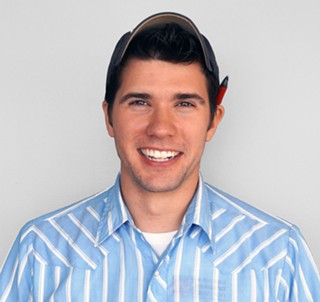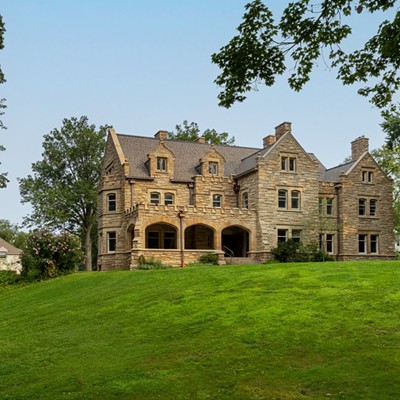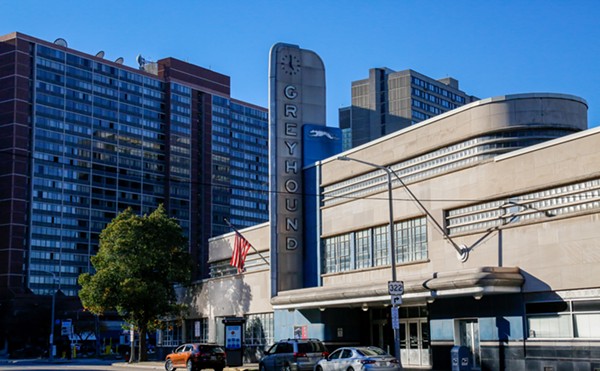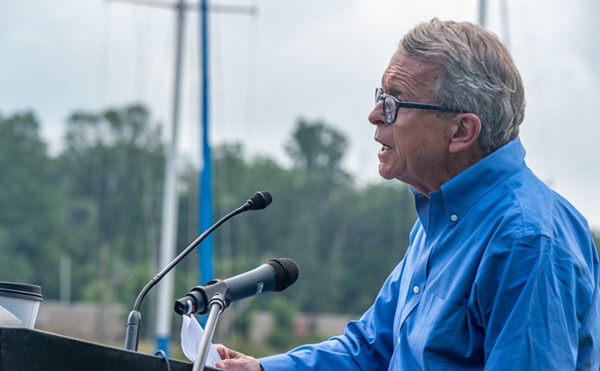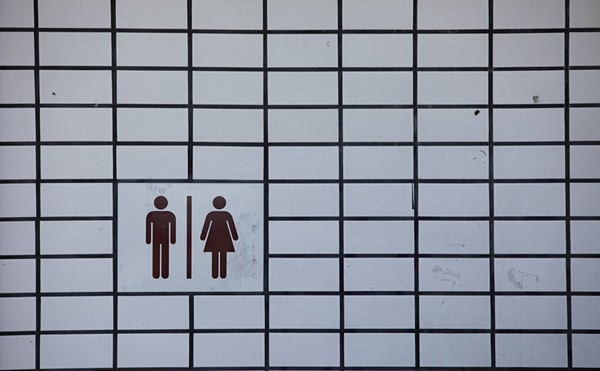Rob Decker, Cedar Point's VP of planning and design, has one of the coolest jobs in Northeast Ohio. This year, he coordinated the creation and construction of the brand new Gatekeeper coaster. The park's opening day is just around the corner (May 11), and Decker's schedule has been jam-packed with prep work and finishing touches, but he takes some time out of his Friday morning to weigh in on the revolutionary Gatekeeper ride and the thrill of being a boss at America's Roller Coast.
Sam Allard: Man, you get to work early huh?
Rob Decker: Not as early as the construction guys, that's for sure..
They're still doing construction out there?
It's like a 'broom clean' at this point, and there are a couple of signs that'll show up over the weekend that I'm eager to get.
And you were at a film shoot yesterday?
Yeah, actually Good Morning America was here to do a segment.
Is that mostly for the new coaster, or just for the park in general?
For the new coaster, and we're expecting a good turnout for our Media Day on Thursday. Are you a roller coaster type of guy?
Heck yes. I have tons of fond memories from Cedar Point back in the day.
When I say 'back in the day' I mean like 25 years ago.
I'm talking maybe 12-15. At any rate, I'm psyched for Gatekeeper. I've seen the photos, but maybe you could tell me what makes it so unique.
Well, for one thing, I think the design of a wing coaster is revolutionary. And it's because of the rider's sitting position: Instead of being over the rail or suspended under the rail, you're out on the wing, so that in and of itself defines a whole new experience for the rider. The dynamics are just different. For every rotation, every inversion, your whole perspective changes. Essentially, it's because there's nothing above you and nothing below you. It feels liberating.
You're telling me.
When you start with that premise and you're looking at the design of what the roller coaster can do, it changes the way you think about developing it entirely.
And for the record, when you develop a coaster, you don't use popsicle stick models?
We work with the best in the industry. The engineering is Swiss -- Bolliger and Mabillard in Switzerland.
Sounds pretty legit.
They are. For Cedar Point, they were the engineers and fabricators for Raptor and Mantis. And this is the 16th roller coaster that we've worked with them on. They came up with the wing coaster concept and when we met with them at one of our trade shows, I was looking for something truly unique. I mean, you know our track record: we were the first company to build over 200 feet with Magnum, 300 feet with Millenium Force, and then 400 feet with Top Thrill Dragster, so everyone's looking for us to fill in the blank on the next one. We had to come up with something that's very different, something that gets your attention, and what I really wanted is something that is experiential but also repeatable.
That's a tall order. How do you design something addictive?
Well, it's broad enough that the whole family can ride it. It's not just for the extremists -- you know, the teenagers and enthusiasts who crave more force and more inversions and more speed and just consume coasters like we do Cheerios.
Put that shit on a bumper sticker, Rob.
We worked through maybe 20 different layouts and schemes until we came up with the keyhole element which I really think is going to be its signature.
Those Stonehengey things?
Uh huh. It gives it that optical illusion, which is always a smart thing to do on an experiential coaster. It looks like you're going to hit the towers and then at the last second...you go vertical. And then you have to do a 180 rotation to get through the other side. So as you can imagine, the clearance envelope is critical here. It's like that low beam on Gemini, if you've ever ridden that. Once you're out on the wing and you're feeling liberated, but also we play into that innate fear of "What's gonna happen?"
So what about safety? Presumably, the coaster goes through pretty rigorous testing.
As you can imagine, safety has to be the priority in everything we do. Every decision filters through the safety factor. Whether it's the type of steel that's used or the wall fitness for the structure or what happens in a Nor'easter. The limitations of the human body are factored into every inch of the ride. We actually have the whole history of roller coasters built into dialogue and regulations and safe practices. And it's not just about what the body can , because we're not all astronauts. It's about the position the body needs to be in to enjoy the ride comfortably. And then also, how can we scare the pants off them?
Is that ever a difficult line to walk? Trying to create maximum thrills while still keeping everyone totally safe?
The example there for me is Top Thrill Dragster. You're going to go from zero to 120 miles an hour in under four seconds. Unless you've got a boatload of money, you can't buy a car that does that. This is where you come to get that kind of thrill. And I think that appeal is so broad. From a physical standpoint, everyone can endure that. But from a mental and psychological standpoint, you've really gotta man up to get on.
Is there sort of a one-upmanship that goes on between you guys and other parks when you're coming out with new coasters?
We do compete. But I think marketing is the key. If someone is building a coaster that's 275 feet, I look at that and say -- I wonder how much it would cost to go 300. Because that 300 just looks so much better on paper. The difference in that 25 feet in reality might not mean much to the rider, so long as you entertain them. I know the industry inside and out and I know that being the second-mover on technology is a good practice to have. Like with the wing coaster, we've seen it evolve -- the first one was in Italy -- and we've created something that's longer, faster, and with more inversions. The sequencing is just more exciting than what's been done already.
So there's an artistry to roller coaster design. It's not just up and down anymore?
To us, it's like a symphony. Every component, every piece, has to unfold in a natural, expected way and you can't try to compress it. What enables us to do all that in reality is the microprocessor. Ideas can be vetted and produced and mocked up so much easier than even two decades ago.
So how did you arrive at this job? Are you an engineer?
I'm not sure how it happened -- it was kind of a blur. But I'm an architect. I had been working on urban mixed used developments, Baltimore Inner Harbor type development. And I met a guy who said what I did was a lot like amusement parks, and he had a project he wanted me to work on. Turned out, he was one of the consultants who was working on Universal Studios in Florida. There wasn't a roller coaster in the project, but it was a grand scale, and I just got the bug. That's what happens to people in this industry. You really have to love it. .

